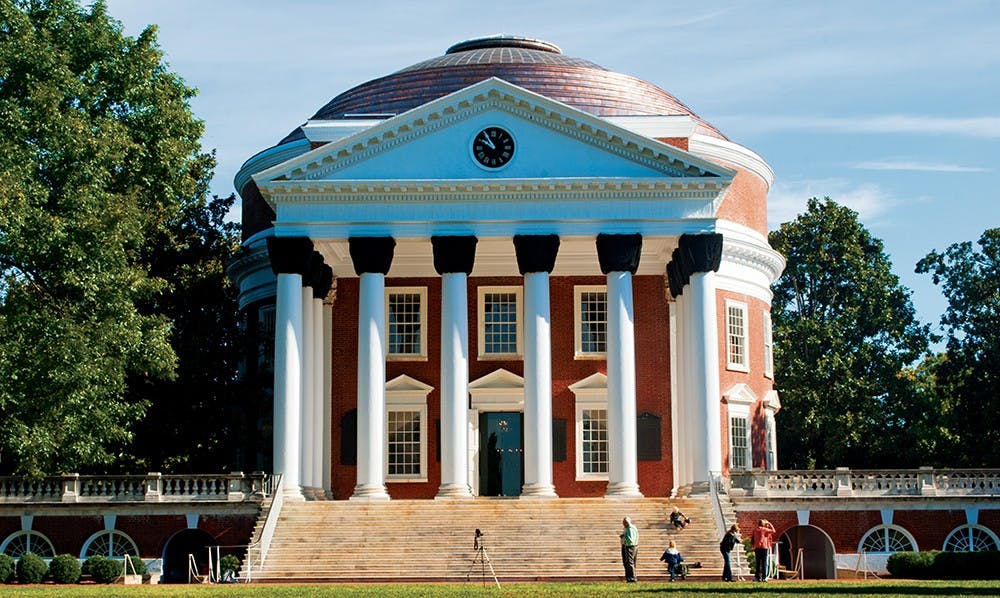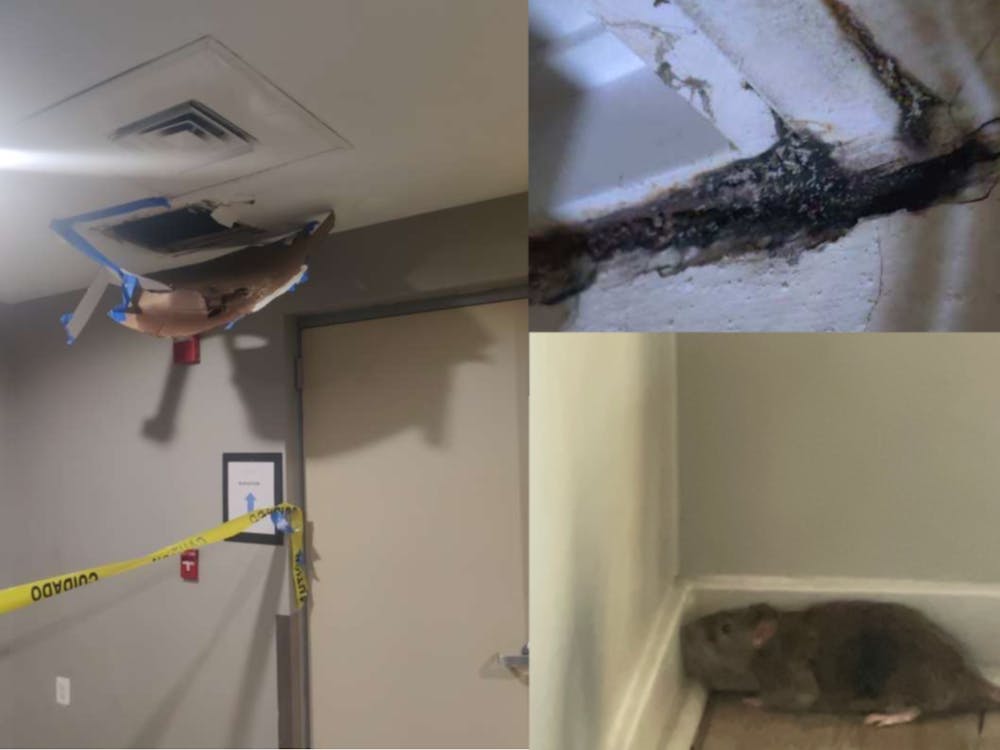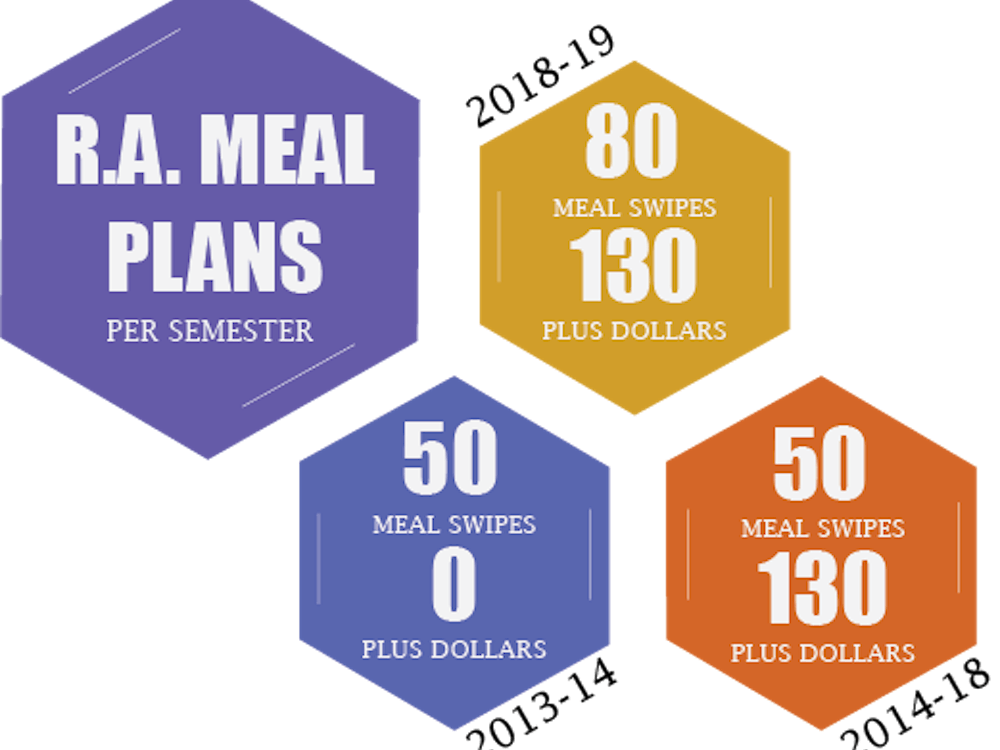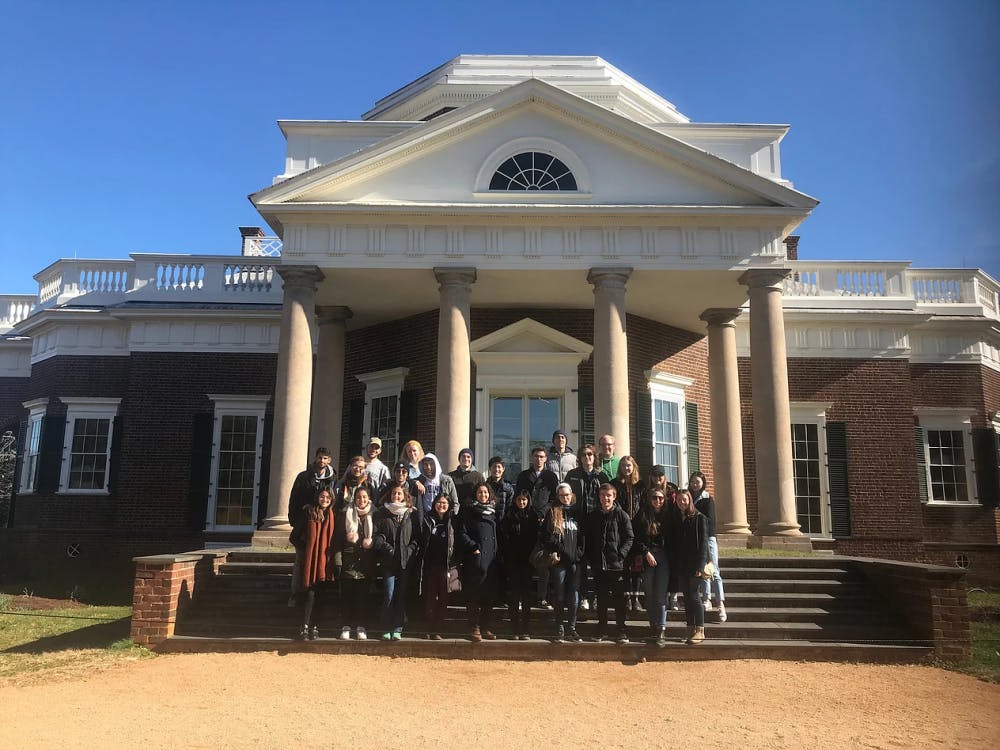The Rotunda was the heart of Thomas Jefferson’s plans for the Academical Village, and the building serves as a UNESCO World Heritage Site today. While Jefferson intended the building to house classrooms and a library, its function has changed through several stages of renovations.
Jefferson designed the Rotunda based on the architecture of the Pantheon in Rome, though he died before construction was completed in 1826. The architecture of the Rotunda has also changed over several centuries, though current renovations have seen a push to restore Jefferson’s original design.
History of the Rotunda
Over time, the original Jeffersonian version of the Rotunda has gone through quite a few changes — most notably after a fire destroyed the dome and the interior of the Rotunda in 1895.
“On the exterior, they made a really strong effort to recreate the appearance of the building before the fire,” Senior Historic Preservation Planner Brian Hogg said. “On the interior, they changed it completely.”
After the fire, the Board of Visitors looked at several different options for restoring the Rotunda before settling on the New York architectural firm McKim, Mead and White. Stanford White, one of the firm’s partners, took the lead on designing it.
Using some of the ideas brought forward by another architect, White suggested eliminating one of the building’s three floors, creating an open space instead. He insisted this was what Jefferson would have wanted if it had been technically possible at the time.
For the Board of Visitors, it was important to make the building fireproof, and some changes had to be made to the original design for this reason.
“The exterior ornaments had previously been made of wood,” Historic Preservation Architect Jody Lahendro said. “After the fire those elements were made of sheet copper painted white.”
The dome structure was also added to the Rotunda at this time. The dome was initially made out of copper, and though White had planned on painting it white, he never completed this step, Lahendro said. Instead, the copper developed a white finish over time.
The next big renovation happened in time for the University’s bicentennial celebration in 1976. This time, there was a concerted effort involving University professors to restore Jefferson’s original interior. However, since Alderman Library had been completed in 1938, the Rotunda’s biggest function had disappeared.
“There wasn’t really a great, clear purpose for the building,” Hogg said. “Partly because of that and partly because there was bicentennial excitement about Jefferson, [builders] ripped out the 1890s interior, and they put in this new interior that is designed following the materials that Jefferson left. They put back the floor that had been removed in the 1890s, and they recreated the shape of the rooms and the dome room.”
At the same time, architects kept some of the exterior changes made after the fire, including the north portico and the north wings. The copper dome, on the other hand, was replaced with steel panels, which were painted white.
Graphic by Kriti Sehgal
Renovation over the past four years
After the bicentennial changes, the Rotunda had not undergone another renovation until now. The first phase of the current renovation started in 2012 and included replacing the steel panes on the dome with a copper roof as well as completing restorative work on the exterior of the building.
The second phase of the renovation has required the Rotunda to be closed for about two years. This phase — which started after Final Exercises for the class of 2014 — includes changes to the interior of the building, such as replacing the dome ceiling, upgrading the infrastructure of the classrooms and the Board of Visitors meeting room, adding stairs and modernizing safety features. The dome will also be painted in this phase, which is expected to be completed this summer.
“There are some physical changes [but] not a ton,” Hogg said. “The changes have a lot more to do with the program of the building [and] how it will be used than they do with physical changes.”
Some historical discoveries have been made during this renovation process, most notably in the chemistry classroom in the lower east oval room. This classroom — which was found to contain a unique chemical hearth — was likely used by Natural History Prof. John Emmet, Lahendro said.
In this newest renovation, there has been an effort to bring the Rotunda closer to Jefferson’s original design. The acoustic ceiling in the dome was made out of perforated metal in the 1976 construction, but this has now been removed in favor of plaster that resembles the original design. In the dome room, 40 capitals were removed and replaced with new carved-wood pieces that mimic the original. This change was especially important, since new access to the first floor balcony will bring visitors in closer contact with the pieces, Hogg said.
“Our interventions in the interior are more about details and refinement than they are about big moves,” Hogg said.
Some changes have been made to modernize the building after its last renovations in the 1970s.
“A lot of what we did is stuff that people will never see,” Hogg said. “New air conditioning, new plumbing and power, lots of data — all this modern technology that you need in a building to make it a functional part of today’s University.”
Impact on Final Exercises
For the class of 2015, construction prohibited the traditional Final Exercises from taking place on the steps of the Rotunda. Instead, the alleys surrounding the Lawn were used as assembly places for the graduating students. Despite ongoing construction, the exterior will be finished in time for this May’s graduation, and students will be able to follow traditional procedures.
“The commitment was that the project would interrupt and effect one graduation, so last year the students were not able to process around the Rotunda because of the project,” Hogg said. “But this year, contractors worked really hard, particularly on the north side of the building, to get the terraces around the Rotunda and the steps ready so the students will be able to gather on the north side of the building … the way students have graduated from U.Va. for many, many years.”
Last year, construction limited access to the Lawn and forced the University to restrict the number of guests attending the graduation ceremony. The solution was a two-day ceremony, with the College and Graduate School of Arts & Sciences graduating Saturday, and the rest of the graduating classes going Sunday. This enabled the University to hand out more guest tickets.
This same two-day structure will be in place for this year’s ceremony, with two separate keynote speakers. The Saturday ceremony will feature English Prof. Rita Dove, former U.S. Poet Laureate, and the Sunday ceremony will feature Law School Dean Paul Mahoney.
Batten student Jasmine Chiu, chair of the Fourth Year Trustees graduation committee, said there had been some worry that the Rotunda would not be completed on time.
“When I first heard about the Rotunda reconstruction, I was worried that the project wouldn't be finished for our graduation,” Chiu said in an email statement. “I’m glad that my classmates will be able to access the terraces of the Rotunda and walk down the steps as tradition calls … We're thankful that it is so close to completion, as the Rotunda has gone through many changes during our time at the University.”
The construction is not expected to have any effect on final exercises for the Class of 2017.
Financing the renovation
The newest Rotunda renovation is a $50.6 million investment, paid for by sources outside University funds. More than half of the costs were paid for by the Commonwealth of Virginia.
“[The state] challenged us to raise the remainder through private sources, which we have been able to do,” Assistant Vice President for Development Amy Yancey said in an email statement.
Private sources have included both University and student groups, including the University Bookstore and the Boar’s Head Inn, and alumni groups like the U.Va. Club of San Francisco, Yancey said.
However, most of the money has come from individual donors, including alumni and parents, Yancey said. The University 200 Donors is a group of 200 donors who have each given at least $100,000. Collectively, they have put almost $20 million towards the project.
One of the primary goals of the campaign is making the building a “fully-functional part of University and student life,” Yancey said.
Office space in the southeast wing was converted into two classrooms, and the new Rotunda will have three classrooms in total — all of which are on track to be available for the fall semester.
“Before the renovation started, [the Rotunda] was not a building that a lot of people had a reason to go into,” Hogg said. “We want to bring a great building into the life of the University, so we created spaces for students to study in and dedicated spaces for a lounge study area and have more tables and chairs in the Dome Room where people can work … So we’re hopeful that one of the great results of this project will be that the building is a lot busier than it was before.”





